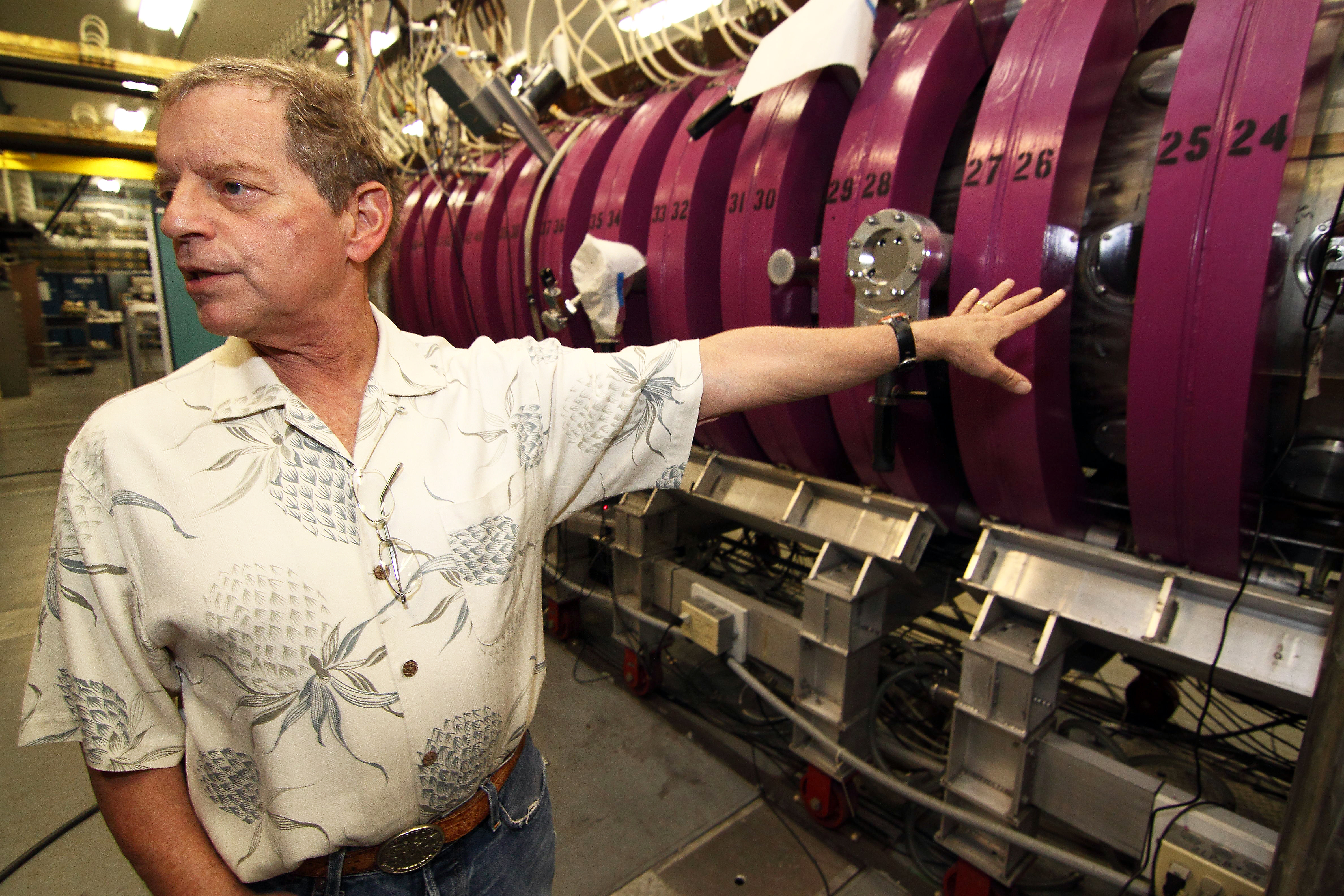UCLA’s LArge Plasma Device helps understand universe, create innovative technology through experimentation with artificial plasma

Walter Gekelman, director of the Basic Plasma Science Facility, shows students the LArge Plasma Device, a machine used to help physicists understand plasma.
By James Barragan
Jan. 24, 2011 1:04 a.m.

Walter Gekelman shows the most well-known form of plasma on Earth, the artificial plasma in neon signs. Using the LArge Plasma Device, scientists at UCLA’s Science and Technology Research Center will be able to produce artificial forms of plasma before taking high-speed photos of the immensely volatile matter.
Correction: The original version of this story contained an error. At industrial plants, the rooms that house plasma-processing devises cost $1 billion to build and maintain.
Somewhere in the midst of the Westwood underground lies a 19 meter-long machine.
The LArge Plasma Device, as it is officially called, produces plasma in artificial form and takes high-speed photos of the material, which is so volatile that it splits apart in a millionth of a second.
Plasma is the most common state of matter in the universe, found in stars and the space between them. But it is not very common on Earth, said Erik Everson, a graduate student conducting research at the UCLA Science and Technology Research Center.
“So much of our universe is plasma, so understanding plasma helps us understand the universe better,” said David Schaffner, also a graduate student at the center.
For years now, scientists have been experimenting with plasma fusion to try to create an alternative source of energy, Schaffner said.
Because plasma splits apart very quickly, it is difficult to control, he said. By studying what causes this split, scientists might learn how to slow down this process ““ a discovery that could be key to achieving plasma fusion.
Plasma can also be used to create computer chips, sterilize medical tools and to eliminate anthrax, said Walter Gekelman, professor of physics at UCLA and architect of the LArge Plasma Device.
Researchers are also looking into innovative technologies in the medical field. For example, Gekelman said melting a patient’s skin with plasma as an incision is made could potentially stave off bleeding during surgery.
“All our experiments are cutting-edge ““ nothing that we do here has ever been done before,” said Gekelman, who directs the center’s Basic Plasma Science Facility.
The research center is a model of modern technology and houses very expensive scientific equipment, including high-powered lasers that can blind a person by simply reflecting off a wall, Gekelman said.
The room that houses the center’s plasma-processing device must be kept dust-free at all times to run projects correctly. At industrial plants, rooms like these cost $1 billion to build and maintain. Machines stored in the rooms are worth another $400 million ““ a testament to the seriousness of the research the center conducts.
“This is not something you’re going to build in your backyard,” Gekelman said. “It’s expensive.”
The research facility is funded partly by UCLA but mostly by organizations such as the Department of Energy and the National Science Foundation, which commissions research.
“Companies sponsor some of the experiments in the lab. They give us million-dollar machines to do the research because experiments take a year and a half to set up and another year to actually do, and companies don’t have time like that,” Gekelman said.
The field of plasma research is progressing rapidly so that UCLA’s current machines become obsolete roughly every six years, Gekelman said. The LArge Plasma Device was built in 2001 but has been upgraded numerous times.
After almost a decade of research, the center has been home to numerous plasma innovations.
But for students such as Schaffner and Everson, the best part about the center is that it is an intermediary between big research labs, where only professional scientists handle the work, and student-run labs. The openness of the research center allows them to learn how to become scientists, Everson said.
“Grad students get to learn hands-on what works, what doesn’t and what will blow up,” Gekelman said.


